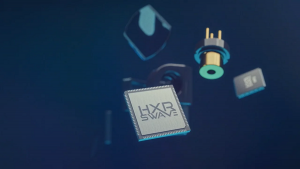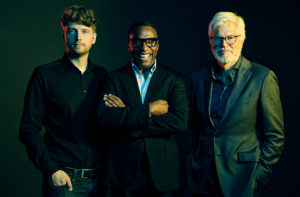T-Mobile Aims to be First U.S. Carrier for BlackBerry Z10
![]() In today’s mobile news roundup: T-Mobile aims to be the first US carrier to offer the new BlackBerry Z10; we learn that BlackBerry 10 devices will not be sold in Japan; Android powered ⅓ of mobile devices shipped in Q4; Google crowdsources Maps in India; and Dell goes mobile with thumbtop.
In today’s mobile news roundup: T-Mobile aims to be the first US carrier to offer the new BlackBerry Z10; we learn that BlackBerry 10 devices will not be sold in Japan; Android powered ⅓ of mobile devices shipped in Q4; Google crowdsources Maps in India; and Dell goes mobile with thumbtop.
T-Mobile aims to be first US carrier for Z10
The BlackBerry Z10 was launched in several countries as soon it was officially unveiled, but US fans were informed that they have to wait until mid-March to get theirs hands on the said device. The reason for the delay is that US carriers take too long in testing the device to see if it works smoothly on their network, but T-Mobile is aiming to be the first US carrier to sell the fresh BlackBerry handset.
According to T-Mobile head of business sales Frank Sickinger, the Z10 is testing well on its network, but the launch date is still in mid-March. There’s still hope for a T-Mobile early launch if they can figure out how to speed up their testing process.
“The device is more stable than we anticipated,” said Sickinger. “If we are able to speed up the launch date, we will do that. Right now it’s looking like mid-March.”
T-Mobile is merging with MetroPCS Communications and launching the Z10 earlier than AT&T, Sprint, and Verizon could help the company gain business users.
BlackBerry 10 devices will not be sold in Japan
BlackBerry wants its glory days back and the company is hoping to do this with the BB10 devices launched just las week. The thing is, its strategy involves focusing on markets where the Z10 is already doing well, and disregard other markets where it could potentially also do well.
BlackBerry announced that it will not sell BlackBerry 10 devices in Japan, but it will still support existing BlackBerry users.
“We are in the process of launching BlackBerry 10 globally in key markets, and we are seeing positive demand for the BlackBerry Z10 in countries where it has already launched. Japan is not a major market for BlackBerry, and we have no plans to launch BlackBerry 10 devices there at this time,” BlackBerry spokeswoman Amy McDowell said. “However, we will continue to support BlackBerry customers in Japan.”
No news yet if BlackBerry will have the same approach in other non-critical markets, but it’s an important topic considering the amount of brand damage BlackBerry’s faced in Japan. Here to discuss BlackBerry’s obstacles in Japan is contributing editor John Casaretto, who appeared on this morning’s NewsDesk show with Kristin Feledy.
Android powered ⅓ of all mobile phones shipped in Q4
In Canalys’ recent report, it was determined that the total mobile phone market has reached 438.1 million units, with the smartphone market share growing by 37 percent, which means that smartphones shipped in the fourth quarter represent almost 50 percent. This means that consumers are now more interested in purchasing smartphones rather than feature phones.
Android smart phones accounted for 34 percent of all phone shipments, while iOS phones was at 11 percent.
In the smartphone market, of the 216.6 million shipped, 69 percent were Android smartphones with Samsung being the biggest contributor which grew by 78 percent. Other Android vendors, Huawei, ZTE, Lenovo and Yulong, all saw triple-digit growth percentages. Though Android still dominated the fourth quarter, it dipped sequentially from 74 percent as Apple grew from 15-22 percent because of the iPhone 5. As for the underdogs, BlackBerry and Windows Phone shares remained unchanged sequentially at 4 percent and 2 percent respectively.
“BlackBerry, Microsoft and Nokia, as well as other Android vendors, have strategies and devices in place to attack, but the task is daunting to say the least,’ said Pete Cunningham, Principal Analyst.
“When we look at the whole of 2012, Nokia remained the number three smart phone vendor, shipping 35 million units, but Apple in second place shipped 101 million more handsets. First-placed Samsung shipped 74 million more than Apple – the gaps are colossal. But there is still a big opportunity as smartphone penetration increases around the world. Vendors left in the wake of the top vendors must at the very least improve their portfolios, time-to-market and marketing, as well as communicate their differentiators. Microsoft, BlackBerry and other new OS entrants, such as Mozilla, must make the OS switch as simple as possible and drive and localize their respective app and content ecosystems.”
Google crowdsources Maps in India
Google wants to deliver better mapping to the good people of India, as well as to people traveling there. But India has been plagued for years with bad mapping, making it quite difficult to get around and find great places to visit. In order to enhance Google Maps in India, which can be accessed on mobile devices, the search giant is asking the public for help.
Google will be hosting its annual Mapathon in India this year, which will run from February 12 to March 25, 2013. Participants will use the Google Map Maker to update map information or add details to the map. Of course, Google knows that people won’t participate without incentives, so plenty of goodies will be given away. Up for grabs are 10 Samsung Galaxy Note 800 Android tablets, 40 Samsung Galaxy SII, 50 Flipkart gift coupons worth Rs. 5,000 each, and 1,000 Google Mapathon 2013 t-shirts and certificates. Participants should be in India since map edits done in India are the only ones eligible. To see full details on the Mapathon, click here.
Dell goes mobile with thumbtop
Dell recently announced that it would go private in the hopes of salvaging the company as the world moves away from desktop PCs. Dell is said to be focusing more on software, but will not entirely abandon hardware.
Also, the company is going mobile, not with smartphones and tablets, but with thumbtops. At CES 2013, Dell introduced Project Ophelia, a take-anywhere thumbstick computer. Yup, it’s a computer, not a flash drive or external hard drive. It will be available to consumers by June and will run Google Android, presumably the latest version which is Jelly Bean. It connects to monitors and TVs via USB, where it gets its power, so users can access content and apps stored in the cloud. And It communicates with keyboards, mice and speakers wirelessly.
The device will sell for less than $100.
A message from John Furrier, co-founder of SiliconANGLE:
Your vote of support is important to us and it helps us keep the content FREE.
One click below supports our mission to provide free, deep, and relevant content.
Join our community on YouTube
Join the community that includes more than 15,000 #CubeAlumni experts, including Amazon.com CEO Andy Jassy, Dell Technologies founder and CEO Michael Dell, Intel CEO Pat Gelsinger, and many more luminaries and experts.
THANK YOU













